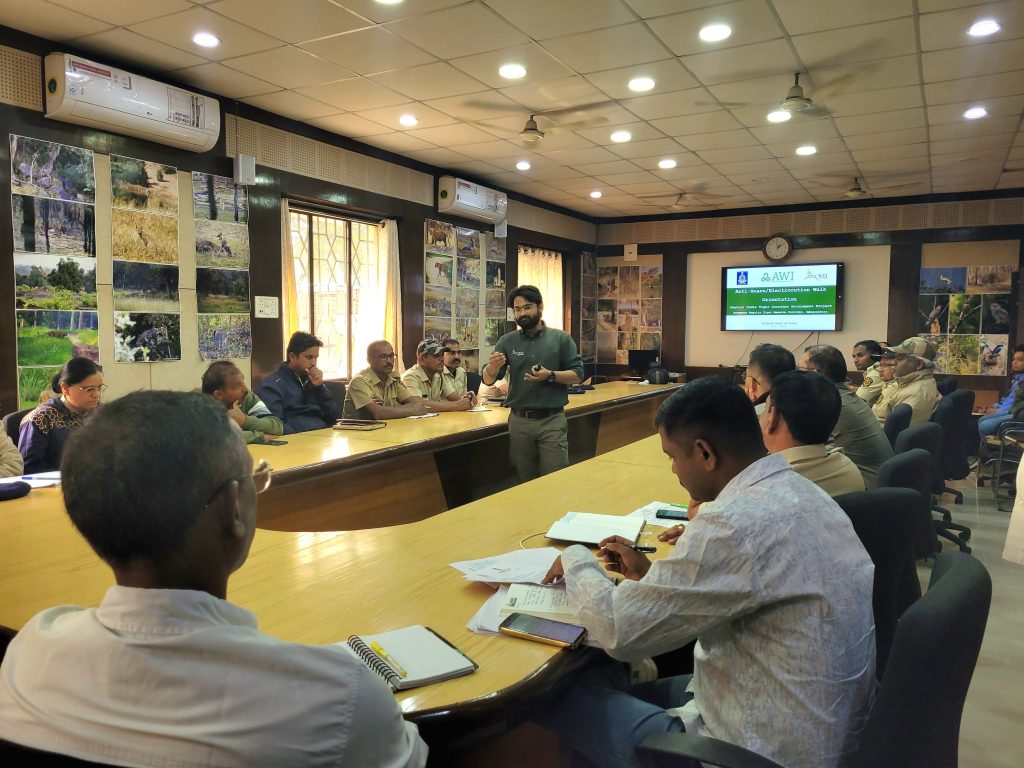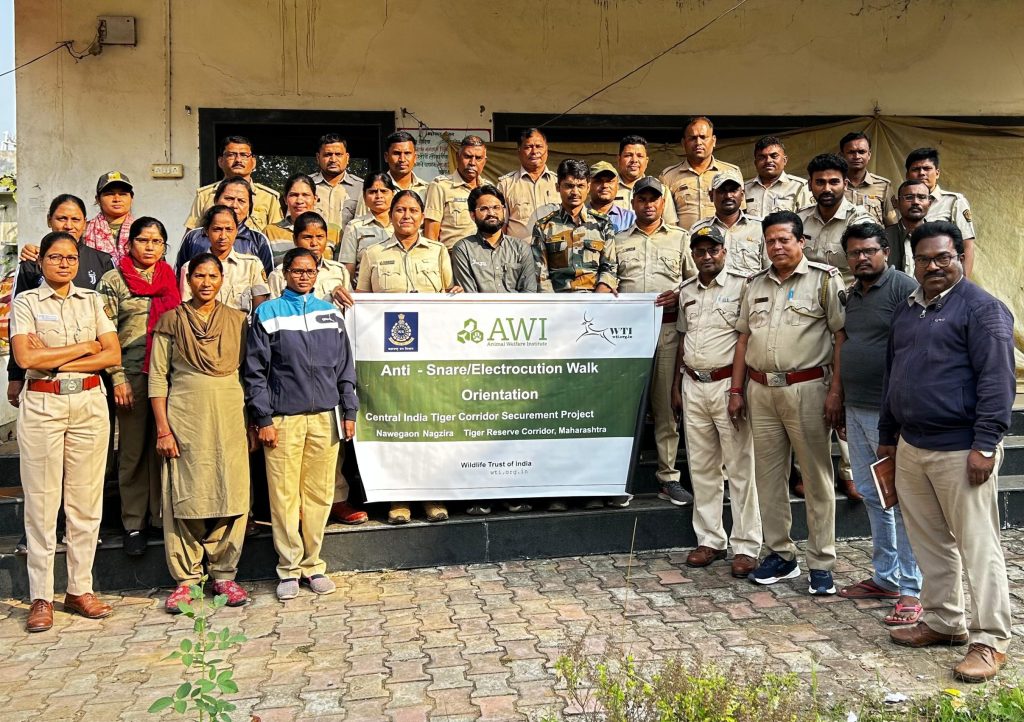WTI conducts orientation training for ASW and AED across the Vidharbha landscape in Maharashtra
Nagzira, 14th December, 2023: Wildlife Trust of India, in collaboration with the Maharashtra Forest Department, regularly conducts orientation training on anti-snare walks (ASWs) and anti-electrocution drives (AEDs) for frontline forest staff of Nagzira-Navegaon Tiger Reserve (NNTR).
Illegal hunting and poaching is the single largest threat to the conservation of many threatened and flagship species, globally. Among all methods used, snaring is an age-old technique, that poachers use to capture or kill wildlife. To address the issue, Wildlife Trust of India initiated ASW as a combing method to identify and remove snares in and around protected areas in 2011. The efficacy of ASW is widely recognised today and has become a mandate for all Tiger Reserves across the country.
Wildlife deaths in Central India due to snares and electrocution
Among the tiger conservation habitats in the Central Indian region, the Vidharba landscape (which largely falls in the North-East part of the central Indian state of Maharashtra) is a critical corridor area for tiger movement (also considered to possess the largest forest cover among all Tiger corridors in India). However, the landscape also suffers from high anthropogenic pressure, wherein tigers and other mammals regularly come in close contact with humans, leading to negative encounters (mauling, crop property damage etc). In the past decade, five tigers and 14 leopards have been killed due to snares and traps in the landscape. Similarly, approximately 60 leopards were injured and 30 other wild animals died painful deaths due to these body-gripping traps. Electrocution from live wires has also been a pertinent threat in the landscape.
Maharashtra alone witnessed 41 tiger deaths in the first ten months of 2023, eight of which were attributed to electrocution. Moreover, instances of poaching and snaring continue to threaten wildlife, with a recent case of tiger seizure involving a perpetrator from a village within NNTR.

Anti-snare walk orientation training in Gondia, NNTR, Maharashtra | Photograph by Idris Ahmed
ASWs in Vidharbha landscape
Supported by the Animal Welfare Institute, WTI initiated orientation workshops across eight ranges of the Territorial Division of NNTR. This comprehensive training involved 141 forest officials, along with participation from 10 officials of Maharashtra State Electricity Distribution Company Limited (MSEDCL) to initiate collaborative efforts to reduce electrocution and snaring in the landscape. The focus was on conducting ASWs and AEDs, crucially extending beyond core areas to include buffer zones where tigers frequently roam, as highlighted in a recent Wildlife Institute of India (WII) report.
Practical sessions involved forest officials being divided into groups, walking on either side of electric lines and forest-agriculture boundaries, and recording evidence of snaring incidents, possibilities of snaring location and recording ASW tracks and data using the Anti-Snare Walk mobile application. The sessions also included presentations on the overview of wildlife crime in India, including an insight into the Wildlife (Protection) Act, recent amendments, the intricacies of filing a wildlife offence case, and common mistakes to avoid during the process. The session also focused on the documentation of evidence when encountered.
S.M. Dathrak, the Range Forest Officer of North Deori, stressed the importance of conducting such ASWs and AEDs regularly in the region. He shared insights regarding the recent tragic incident involving three leopards – a mother, and two cubs, that died due to electrocution in August this year. The incident had prompted local residents to be vigilant and refrain from setting up electric wires. While expressing his full support towards such workshops, Sachin. R. Thakare, the Range Forest Officer of Sadak/Arjuni also expressed the need for MSEDCL officials to regularly map out sensitive regions based on the tripping data.

Participants in the orientation training on anti-snare and anti-electrocution for the territorial Range of NNTR | Photograph by Idris Ahmed
“WTI will continue conducting similar training and implement ASWs and AED’s across critical tiger landscapes such as Vidharbha”, says Debobroto Sircar, the head of the Wildlife Crime Control Division at WTI. “Thanks to the support of the Animal Welfare Institute, we hope to be able to positively contribute towards the vigilance strategies across these critical landscapes when it comes to saving our wildlife.









